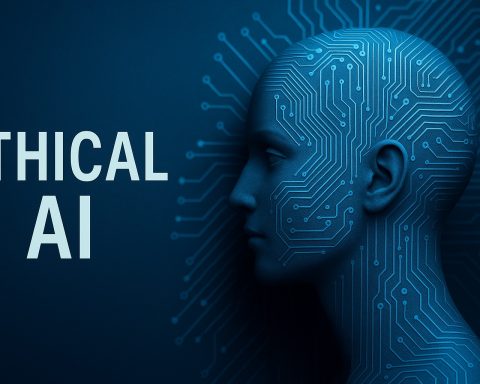Market Overview
Generative AI refers to machine-learning models (often large pre-trained networks) that create new content – text, code, images, audio or video – based on patterns learned from data research.ibm.com. Core technologies include transformerarchitectures (e.g. GPT‐4) and generative models (e.g. GANs, diffusion networks). These models (“foundation models”) can be fine-tuned for tasks like writing prose, translating languages, generating art, or even designing new molecules. The recent launch of tools like ChatGPT and Stable Diffusion illustrates how prompt-driven AI can automate or augment creative and analytical tasks.
Global Market Size and Growth
Estimates of the current market vary widely, but all sources predict explosive growth. For example, one forecast projects the market at $43.9 billion in 2023, reaching $967.7 billion by 2032 (≈39.6% CAGR) fortunebusinessinsights.com. MarketsandMarkets similarly sees growth from $71.4 billion in 2025 to $890.6 billion by 2032 (≈43.4% CAGR) marketsandmarkets.com. Other analysts estimate $13.6 billion (2023) → $233.6 billion (2033) businesswire.com, or $16.9 billion (2024) → $109.4 billion (2030) grandviewresearch.com grandviewresearch.com. A 451 Research report (S&P) projects $85 billion by 2029 (from $16 billion in 2024) spglobal.com. Notably, Precedence Research finds $37.9 billion (2025) → $1,005.1 billion by 2034 precedenceresearch.com. In short, consensus is that generative AI spending will grow on the order of tens of percent annually for the rest of the decade. Investments are already very high – VC funding for generative AI alone was roughly $45–48 billion in 2024 mintz.com dealroom.co – indicating businesses expect huge market expansion.
Fig: Recent forecasts for generative AI market size (source: S&P/451 Research, MarketsandMarkets, etc.). Various reports project growth from tens of billions in the early 2020s to hundreds of billions by 2030. fortunebusinessinsights.com marketsandmarkets.com spglobal.com.
- Examples of forecasts: Fortune Business Insights sees $43.87B (2023) → $967.65B (2032) fortunebusinessinsights.com. MarketsandMarkets forecasts $71.36B (2025) → $890.59B (2032) marketsandmarkets.com. ResearchAndMarkets estimates $13.64B (2023) → $233.61B (2033) businesswire.com. S&P/451 (2024) projects $16B (2024) → $85B (2029) spglobal.com. These differences stem from scope and definitions (some include only software, others services, etc.).
- Growth drivers: Analysts agree generative AI adoption is accelerating. For example, McKinsey found that 65% of surveyed companies were already using generative AI regularly by mid-2024 (up from ~33% a year earlier) mckinsey.com. Use cases span industries, and business leaders expect significant disruption (≈75% foresee major industry impact) mckinsey.com. Growth is also spurred by new products (AI copilots, synthetic data tools) and by the abundance of digital content and compute infrastructure. One analysis projects a global economic impact of ~$19.9 trillion by 2030 (roughly 3.5% of world GDP) from generative AI, with ~3.7× ROI on investment aeologic.com.
Key Market Segments
Generative AI can be divided by modality and by industry application. Major segments include:
- Text generation (NLG): Large language models produce human-readable text (chatbots, summarization, content creation). This is currently the largest segment by market share businesswire.com marketsandmarkets.com. Common products include OpenAI’s GPT-4/ChatGPT, Google’s Bard/Gemini (PaLM), and Anthropic’s Claude. Text-based tools are widely used for marketing copy, customer service, and business reports. (A recent report notes “text is the largest data modality” thanks to abundant enterprise text data marketsandmarkets.com. By business process, “content creation and marketing” alone was ~45% of the market in 2022 businesswire.com.)
- Image and video generation: AI models create or edit visual content. Examples include DALL·E (OpenAI), Midjourney, Stable Diffusion (Stability AI) for images, and new tools like Runway Gen-2 or Sora for video. These serve industries like advertising, entertainment, design and e‑commerce (e.g. auto-generating product images or storyboards). Adoption is growing rapidly as model quality improves.
- Code generation: AI-assisted coding tools help software developers write or review code. Products include GitHub Copilot (Microsoft/OpenAI), Amazon CodeWhisperer, Tabnine, and Google’s new code models. This segment is expanding quickly, aided by developer interest and integration into IDEs.
- Specialized applications: Generative AI is being tailored to vertical markets. In healthcare, it can draft clinical notes, propose treatment options, or generate synthetic patient data (e.g. companies like Insilico for drug discovery). In finance, it supports report writing, quantitative analysis and risk modeling (e.g. BloombergGPT for financial news, AI audit assistants). In gaming/VR, generative models can create game assets, NPC dialogue or virtual environments (e.g. AI-generated textures, storylines). Other sectors include legal (contract drafting), retail (virtual agents, personalized content), and education (tutoring, content generation).
- Synthetic data / Other: A growing sub-segment is synthetic data (generating realistic datasets for training models), which is projected to be one of the fastest-growing applications marketsandmarkets.com. For example, startups like Synthesis AI and Mostly AI enable creation of labeled synthetic images or transactions for privacy-safe model training.
Geographic Trends
North America is currently the dominant market. In 2024, ~63% of generative AI revenue came from North American companies spglobal.com. U.S. tech firms (OpenAI, Microsoft, Google, Amazon, Meta) lead globally. One forecast gave the U.S. a $21.65B market in 2025 aeologic.com. Europe is growing more slowly, partly due to regulatory caution (the EU’s AI Act imposes strict rules on high-risk AI and requires watermarking or labeling of AI-generated content digital-strategy.ec.europa.eu). Despite this, EU companies (and the single market) invest heavily in AI R&D, and recent regulations may boost trust and adoption of compliant solutions. Asia-Pacific is the fastest-growing region. China, in particular, is aggressively funding AI: major companies like Baidu (Ernie Bot), Alibaba (Qwen), Tencent (Hunyuan) and startups (DeepSeek, Zhipu’s GLM) have launched competitive LLMs spglobal.com. MarketsandMarkets projects APAC CAGR ~53% (2024–29), far above North America’s ~34% spglobal.com. Research&Markets also notes APAC (~33.2% CAGR) as the fastest-growing region businesswire.com. India, South Korea, Japan and Southeast Asian countries are also accelerating AI adoption with national initiatives (digital language models, compute infrastructure) marketsandmarkets.com spglobal.com. In summary, US leads now (40–60% share) grandviewresearch.com spglobal.com, APAC is growing fastest, and EU remains important but more regulated businesswire.com.
Competitive Landscape
The generative AI space is led by major tech firms, alongside dozens of specialized startups. Key players include:
| Company | Key Offerings | Strategy / Notes |
|---|---|---|
| Microsoft(US) | Azure OpenAI Service, GitHub Copilot, Bing Chat AI | #1 in AI platforms (~39% share in 2024 iot-analytics.com) via cloud+apps; invests ~$90B (2025) in AI, deep integration in Office/M365. Azure hosts OpenAI models and offers diverse foundation models. |
| OpenAI(US) | GPT-4/ChatGPT, DALL·E, Codex, ChatGPT Enterprise | Originator of ChatGPT; leading LLM/chatbot provider (~9% share of foundation-model market iot-analytics.com). Backed by Microsoft ($13B+ investment); pursuing AGI vision; corporate valuation nearing $300B iot-analytics.com. |
| Google (Alphabet)(US) | Bard/Gemini (PaLM), Vertex AI, Imagen (AI image), MusicLM | Strong R&D (PaLM LLMs, diffusion models). ~15% share iot-analytics.com. Focuses on developer tools via Vertex AI, integrating AI into search and cloud. Aims to be cloud/AI platform leader. |
| Amazon (AWS)(US) | AWS Bedrock & SageMaker (model hosting), CodeWhisperer (coding) | Leading cloud for AI infrastructure (~19% share iot-analytics.com). Offers broad model library (proprietary and 3rd-party). Heavily invests in AI (e.g. $4B Anthropic deal, $100B CapEx) iot-analytics.com. |
| Meta (Facebook)(US) | Llama 2 (open LLMs), AI R&D (AI Research) | Open-sourced Llama 2; focuses on embedding AI in social/AR/VR. While not yet matching GPT-4 in product, it has massive user data (Facebook, Instagram, WhatsApp) and chips (Nvidia, its own AI hardware) to compete. Invests heavily in multimodal AI (images, video) and the metaverse. |
| Anthropic(US) | Claude 3 series (chatbot) | AI “safety” startup (backed by Google). Developing Claude models in partnership with AWS. Emphasizes guardrails and enterprise customers. Competing with OpenAI on LLM quality and safety. |
| Stability AI (UK) | Stable Diffusion (image), Stable Video | Open-source image/video generation. Collaborates on AI hardware/cloud (CoreWeave) to scale models. Focused on creative industries and democratization (released many models freely). |
| IBM (US) | Watsonx (foundation models, NLU services) | Enterprise-focused AI, building on Watson heritage. ~2% share in AI platforms iot-analytics.com. Highlights responsible AI (ethics, hybrid cloud integration) and consulting. Targets regulated industries. |
| NVIDIA(US) | GPUs (H100, L40), AI frameworks (NeMo), software stacks | Not a “gen AI product” company, but the dominant hardware/infrastructure provider. NVIDIA’s GPUs power most gen-AI training/inference. It also sells AI software (NeMo models, DGX servers) and has partnerships embedding its tech in all major clouds. |
| Others(various) | Cohere, Mistral AI, Hugging Face, Chatbot startups, etc. | Many startups offer niche models or applications: Cohere (LLMs for enterprise), Mistral (high-performance open LLMs), Inflection AI (Pi assistant), Jasper (marketing copy), Runway (multimodal video tools), etc. Their innovations often get acquired or integrated by larger vendors. |
Each of the above shapes the market. For example, Microsoft’s integration with OpenAI and Azure gives it a 39% market share in foundation models iot-analytics.com, while AWS holds ~19% iot-analytics.com. Google’s share is ~15% iot-analytics.com. OpenAI, with ChatGPT’s popularity, is a pivotal player (its valuation is nearing $300 billion iot-analytics.com). In parallel, Chinese tech giants (Baidu, Alibaba, Tencent, ByteDance) are fielding their own gen-AI models (Ernie, Qwen, Hunyuan, Doubao) to capture Asia’s growth spglobal.com.
Investment and Funding Trends
Generative AI has attracted huge investment. VC funding for AI startups surpassed $100B globally in 2024 mintz.com, with roughly $45–48B earmarked for generative AI alone mintz.com dealroom.co (about double 2023). Late-stage rounds are huge (median Series C+ rounds grew from $48M to $327M in one year mintz.com). Notable deals include SoftBank’s record $40B investment in OpenAI (Q1 2025) news.crunchbase.com. Corporate investment is also massive: AWS committed $4B to Anthropic iot-analytics.com, Microsoft continues its $10B+ stake in OpenAI and plans $80B in 2025, and Meta and Nvidia are investing billions more in AI. Activity is global but concentrated: the U.S. leads in GenAI funding (e.g. SoftBank/OpenAI), though Asia has seen blockbuster deals too. Overall, 2024 saw generative AI ventures raise 20× more capital than in 2020 dealroom.co. This funding surge underlines investor confidence in the technology’s disruption potential.
Opportunities and Challenges
Opportunities: Generative AI offers transformative potential across domains. It can vastly increase productivity (auto-generated marketing content, code, legal drafts) and enable new products (AI copilots, personalized assistants). For instance, MarketsandMarkets notes use cases like fraud analytics in finance, clinical documentation in healthcare, and content synthesis in media marketsandmarkets.com. Synthetic data generation is emerging as a high-growth area, enabling data-hungry industries (autonomous vehicles, healthcare) to create training sets without privacy issues marketsandmarkets.com. The “co-pilot” model (embedding AI into workflows) is a major trend. A recent survey forecasts 75% of companies will use GenAI for synthetic data by 2026 neurond.com. Large-scale economic impacts are anticipated: one analysis projects $19.9 trillion of value by 2030 (≈3.5% of global GDP) from GenAI adoption aeologic.com. In summary, early adopters see ~3.7× returns on GenAI investment aeologic.com. Industry-specific applications (like autonomous vehicle simulation, accelerated drug discovery or instant game asset creation) represent new growth areas.
Challenges: Despite the upside, there are significant hurdles. Regulation and ethics: Governments are beginning to legislate GenAI. The EU’s AI Act (soon enforceable) classifies some AI systems as high-risk and requires labeling of AI-generated content (especially deepfakes and news) digital-strategy.ec.europa.eu. US and other countries are debating rules on deepfakes, IP/copyright, data privacy and AI accountability. Organizations must navigate these emerging requirements. Misuse and bias: AI can generate misinformation or biased content if trained on skewed data. Security and privacy are concerns (sensitive data leaks, synthetic identity fraud). Indeed, one survey found fewer than half of companies have even begun to mitigate accuracy/credibility risks of gen AI mckinsey.com, highlighting the need for human oversight and vetting. Technical hurdles: GenAI demands vast compute power, specialized GPUs and memory. Infrastructure costs are high, and supply of AI chips (dominated by NVIDIA, AMD, etc.) is a bottleneck marketsandmarkets.com. Startups face challenges gaining enterprise trust and differentiating, as incumbents can bundle AI into existing services. From a business perspective, many firms still lack in-house AI talent or clear ROI metrics. Finally, ethical concerns (copyright infringement in training data, copyright of AI outputs, deepfakes, job displacement) are under active debate.
Future Outlook and Recommendations
Generative AI is expected to further proliferate and diversify. Surveys (McKinsey 2024) show two-thirds of organizations now use GenAI regularly mckinsey.com, and 75% expect it will drastically change their industries. A Gartner prediction suggests that by 2027 roughly half of large enterprises will deploy custom generative models for specific domains neurond.com, indicating a shift from public LLMs to specialized in-house AI. Multi-modal models (capable of handling text, image, audio, video together) will become standard offerings – next-gen systems like GPT-5/Gemini and others are already moving this way neurond.com. Efficiency and sustainability will also improve: experts predict a push toward energy-efficient model architectures (e.g. quantized networks, expert models) as by 2030 some GenAI workloads may shift to low-power inference setups neurond.com.
Strategic recommendations: Organizations should take a proactive yet measured approach. This includes:
- Invest in capability & data: Build multidisciplinary AI teams (data scientists, domain experts, ethicists) and secure necessary infrastructure (cloud/GPU resources). Start with pilots in high-value areas (e.g. sales content automation, code review, customer support bots) to demonstrate ROI.
- Embrace hybrid models: Use a mix of public foundation models (via API) and fine-tuned/custom models for proprietary data. Many forecasts imply customized AI (“enterprise fine-tuning”) will be key neurond.com.
- Manage risk: Implement AI governance and testing. Integrate guardrails (accuracy checks, human review) for critical outputs. Stay abreast of regulatory requirements (e.g. watermarking or labeling per EU AI Act digital-strategy.ec.europa.eu).
- Address ethics: Develop policies on bias monitoring, privacy (avoid PII leaks), and intellectual property (respect data rights). Train staff on responsible use.
- Monitor ecosystem: Track innovations from startups and cloud vendors. Consider partnerships (e.g. with Hyperscalers, AI startups) to gain early access to new models.
- Continual learning: Given rapid change, encourage a culture of experimentation and learning. Employee training on GenAI tools and limitations will be essential.
In summary, while challenges (regulatory, ethical, technical) must be navigated, the strategic imperative is clear: harness generative AI’s capabilities now or risk being outpaced by competitors. The technology’s evolution will unlock new business models and efficiencies, so organizations should experiment aggressively but responsibly, invest in talent and infrastructure, and adapt their strategy as the market matures.
Sources: Data and insights drawn from industry analyses and forecasts research.ibm.com fortunebusinessinsights.com marketsandmarkets.com businesswire.com grandviewresearch.com spglobal.com businesswire.com marketsandmarkets.com spglobal.com iot-analytics.com iot-analytics.com iot-analytics.com mintz.com news.crunchbase.com aeologic.com mckinsey.com mckinsey.com digital-strategy.ec.europa.eu.












